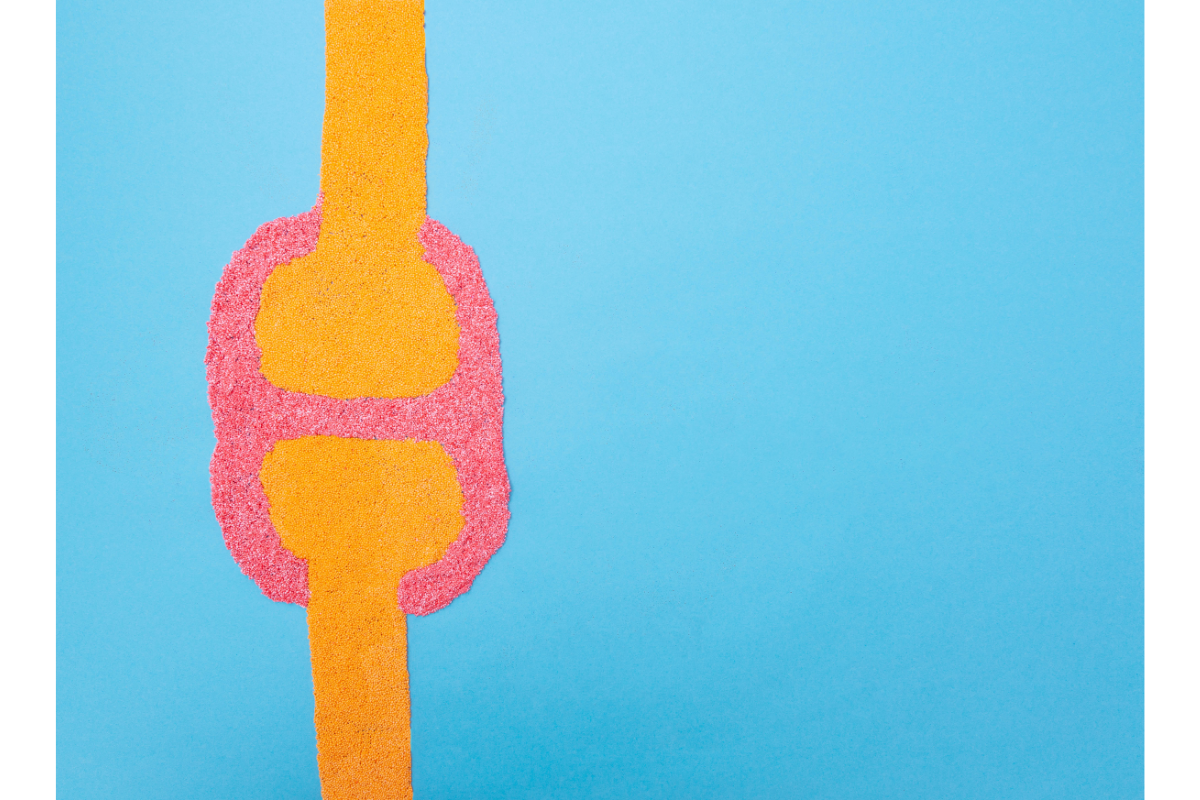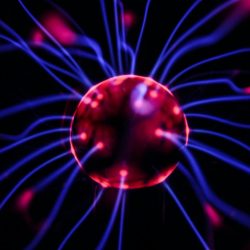Spondylitis is a condition that affects the spine as well as the sacroiliac joints. Better known under the name of ankylosing spondylitis, it is a polygenic disease (due to several genes but also to environmental factors) which affects a relatively young population between 15 and 50 years old.
What is ankylosing spondylitis ?
Ankylosing spondylitis is a chronic progressive inflammatory disease, the cause of which remains unknown. It can affect peripheral joints and extra-articular structures. The possible extra-articular manifestations are in particular:
- Eye disease
- Cardiovascular diseases
- Lung disease
- Neurological damage
- Kidney damage
Ankylosing spondylitis is also known under the names of rheumatic pelvispondylitis or Marie-Strümpell’s disease.
The term spondyloarthritis corresponds to the old terminology of spondyloarthropathies. The current tendency is to speak rather of the forms of clinical presentation than of the forms according to nosological classifications. Thus we distinguish spondyloarthritis:
- X-rays (which correspond to classic ankylosing spondylitis); without specific radiographic abnormalities (called “non-radiographic”)
- Erosive or non-erosive articular devices
- Enthesitic devices
Any extra-articular manifestations (anterior uveitis, psoriasis, Crohn’s disease, proctocolitis) can indeed be associated with each of these groups and make it possible to better characterize the attack.
What are spondyloarthropathies ?
Spondyloarthropathies group together pathologies the elementary lesion of which is inflammatory damage to the axial and / or peripheral entheses. These include ankylosing spondylitis, reactive arthritis, psoriatic arthritis and joint manifestations of chronic inflammatory enterocolopathies (Crohn’s disease and ulcerative colitis). Their prevalence is close to that of rheumatoid arthritis, of the order of 0.2 to 0.5% in the general population.
These rheumatisms have common characteristics: They begin most often in young adults with a predisposing genetic background and have an evolution marked by frequent spontaneous remissions but also towards a chronic, disabling and disabling form.
What are the symptoms of ankylosing spondylitis ?
Ankylosing spondylitis is characterized by mild or moderate flare-ups of active inflammation alternating with periods of little or no inflammation. In most affected people, correct treatment minimizes or even eliminates any disability and allows for an active and productive life, despite lumbar stiffness. Sometimes the disease is severe and progressive, resulting in disabling deformities.
What is the course of this disease ?
The entire spine and joints in the pelvis become painful. There is no nighttime rest. In the long run, the spine arches, projecting the head forward. Other joints are also affected (especially the hips, feet) and sometimes need to be replaced with prostheses.
Ankylosing spondylitis is therefore a progressive disorder characterized by outbreaks of active disease alternating with periods of inactive inflammation. Occasionally, the course of the disease is severe and without remission. The most common symptom is recurrent low back pain that persists for more than 3 months. It occurs in particular at night. Some people develop stiffness in the lumbar spine early in the morning, but it goes away after a period of activity.
Stiffening the spine can produce the characteristic body displacement of moving the torso as a block. When the axial skeleton is affected, the expansion of the rib cage may decrease (less than 4 cm). Chest constriction results in restrictive respiratory disease. Asthma is not included, as restrictive respiratory disease is caused by an abnormality of the chest wall that limits expiratory and inspiratory movements.
Some naturopathic advice to best mitigate the symptoms related to this pathology
- Perform daily flexibility exercises to keep the spine straight, maintain spinal mobility, and mobilize painful joints. Practicing a sport without excessive strain on the spine can help maintain good posture (swimming on the back, walking, badminton, tai chi, yoga). In times of flare, rest transiently.
- For good posture, reading in the prone position, leaning on the elbows or on cushions and thus extending the back, keeps the back supple. Since movement of the chest wall may be restricted (which impairs lung function).
- Quitting smoking is imperative: smoking is associated with greater activity and progression of the disease.
- Immerse yourself in hot water: back pain is excruciating when you wake up? A hot bath or shower can relieve pain and relax tight muscles and joints.
- Avoid overwork; it is important to keep the heart and lungs healthy. Walking, Nordic walking, swimming or cycling are all suitable sports. However, be careful with contact sports, as well as sports requiring significant effort.
- It is important to maintain a healthy weight, as being overweight increases joint load and pain. Eat vegetables and fruits daily. Protein in the form of fish, beans, pulses, nuts, eggs, and meat help provide needed calcium and are important for healthy bones. Too much meat on the other hand leads to the formation of pro-inflammatory arachidonic acid in the body.
- When driving for a long time, consider taking breaks at least once an hour to stretch.
Some herbal remedies to relieve ankylosing spondylitis
Turmeric rhizome :
A renowned anti-inflammatory, turmeric is indeed an activator of the nuclear transcription factor PPAR-γ which plays a role in certain inflammatory processes. The anti-inflammatory activity of curcumin has been shown in models of acute and chronic inflammation. Different molecules involved in inflammation are inhibited by curcumin such as phospholipase, lipoxygenase, cyclooxygenase 2, leukotrienes, thromboxane, prostaglandins, NO, collagenase, elastase, hyaluronidase, chemoattractant monocyte protein-1 (MCP-1), interferon-inducible protein, tumor necrosis factor (TNF) and interleukin-12, with great safety.
Dried saffron stigmas :
Saffron is a reputed analgesic and anti-inflammatory spice (especially in chronic inflammation). Extracts of saffron stigmas and petals have an anti-nociceptive effect, as well as an acute and / or chronic anti-inflammatory activity. Safranal, crocin and crocetin are also believed to be immunomodulators.
Blackcurrant leaves :
Anti-inflammatory, without ulcerogenic effect, blackcurrant leaves have an effect comparable to standard NSAIDs (indomethacin and niflumic acid). Peripheral analgesic, they decrease the concentration of TNF-α, IL-1β and CINC-1, without affecting IL-6 and IL-10, but with inhibition of the release of NO.
Free radical traps, they oppose lipoperoxidation by oligomeric proanthocyanidins. The anti-inflammatory activity of proanthocyanidins is in fact linked to an inhibition of leukocyte infiltration, a downregulation of endothelial adhesion molecules, ICAM-1 and VCAM-1. These molecules are capable of modulating VEGF transcription induced by TNF alpha.
The di- and trimeric prodelphinidines are antiphlogistic and anti-inflammatory.
Relieve spondilarthritis with homeopathy:
Locally on tendon insertion pain:
Ruta graveolens + Bryonia + Symphytum officinale (4 à 5 CH)
Dosage: We advise you to combine these 3 strains by taking 3 granules 3 times a day.
About sacroiliitis (inflammation of the sacroiliac joint):
Actea racemosa + Kalium bichromicum + Tellurium + Medorrhinum (7 à 9 CH)
Dosage: We advise you to combine these 4 strains in daily intake of 5 granules per day.
We can however add for example, in low dilution :
- Rhododendron: In case of aggravation by changes in weather, wind, snow
- Caulophyllum : In case of worsening during menstruation with pain in the hands
- Formica rufa : With urinary disorders
- Actaea racemosa + Causticum : With significant muscle contractures
- Rhus tox : With significant morning stiffness
- Lachnantes : With significant neck damage
- Aurum metallicum + Sulfur + Agaricus + Berberis : With significant lumbar stiffness
Sources :
- Cotran, Ramzi S., Vinay Kumar and Tucker Collins. Robbins Pathologic Basis of Disease. 6 ed. Toronto: W.B. Saunders, 1999
- Dee, Roger, Lawrence C. Hurst, et al. Principles of Orthopaedic Practice. 2nd ed. Montreal: McGraw-Hill, 1997
- Ruddy, Shawn, Edward D. Harris and Clement B. Sledge, eds. Kelley’s Textbook of Rheumatology. 6 ed. Toronto: W.B. Saunders, 2001
- Weinstein, Stuart L. and Joseph A. Buckwalter. Turek’s Orthopaedics Principles and Their Application. 5 ed. Philadelphia: J.B. Lippincott, 1994
- Mazidi M, Karimi E, Meydani M, Ghayour-Mobarhan M, Ferns GA. Potential effects of curcumin on peroxisome proliferator-activated receptor-γ in vitro and in vivo. World J Methodol 2016
- Shehzad A, Rehman G, Lee YS. Curcumin in inflammatory diseases. Biofactors 2013
- Hossein Hosseinzadeh, Hani M Younesi. Antinociceptive and anti-inflammatory effects of Crocus sativus L. stigma and petal extracts in mice. BMC Pharmacology 2002
- Declume C. Anti-inflammatory evaluation of a hydroalcoholic extract of black currant leaves (Ribes nigrum). J Ethnopharmacol 1989
- Garbacki N, Angenot L, Bassleer C, Damas J, Tits M. Effects of prodelphinidins isolated from Ribes nigrum on chondrocyte metabolism and COX activity. Naunyn Schmiedebergs Arch Pharmacol 2002
- Albasini A, Bertoldi M, Costantino L, Rossi T, Rastelli G. Inhibition of lipid peroxidation by Ribes nigrum L. extracts. Plantes médicinales et phytothérapie 1967
- Garbacki N, Kinet M, Nusgens B, Desmecht D, Damas J. Proanthocyanidins, from Ribes nigrum leaves, reduce endothelial adhesion molecules ICAM-1 and VCAM-1. J Inflamm (Lond) 2005





